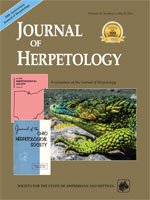Recent population declines in amphibians associated with mortality in early life stages highlight the need for a better understanding of the environmental factors related to successful survival to metamorphosis. In our study, we closely examine the relative importance of environmental factors to three stages of recruitment for Cascade frogs (Rana cascadae), a declining amphibian, in high-elevation wet meadows. Our results show that local dynamics are strongly associated with breeding site selection, the number of egg masses, and the number of individuals that survive to metamorphosis per egg mass. Rana cascadae does not tend to breed in wet meadows where nonnative trout are present. Survival to metamorphosis per egg mass is lower when hydroperiod of pools is shorter, cattle use is higher, and native insect predators are present. Our results suggest that future management efforts to conserve R. cascadae should strive to protect and restore wet meadows free from nonnative trout, containing many pools with longer hydroperiods, and subjected to minimal cattle use during sensitive development periods.
How to translate text using browser tools
1 March 2016
Hydroperiod and Cattle Use Associated with Lower Recruitment in an r-Selected Amphibian with a Declining Population Trend in the Klamath Mountains, California
Esther M. Cole,
Rosemary Hartman,
Malcolm P. North
ACCESS THE FULL ARTICLE

Journal of Herpetology
Vol. 50 • No. 1
March 2016
Vol. 50 • No. 1
March 2016




